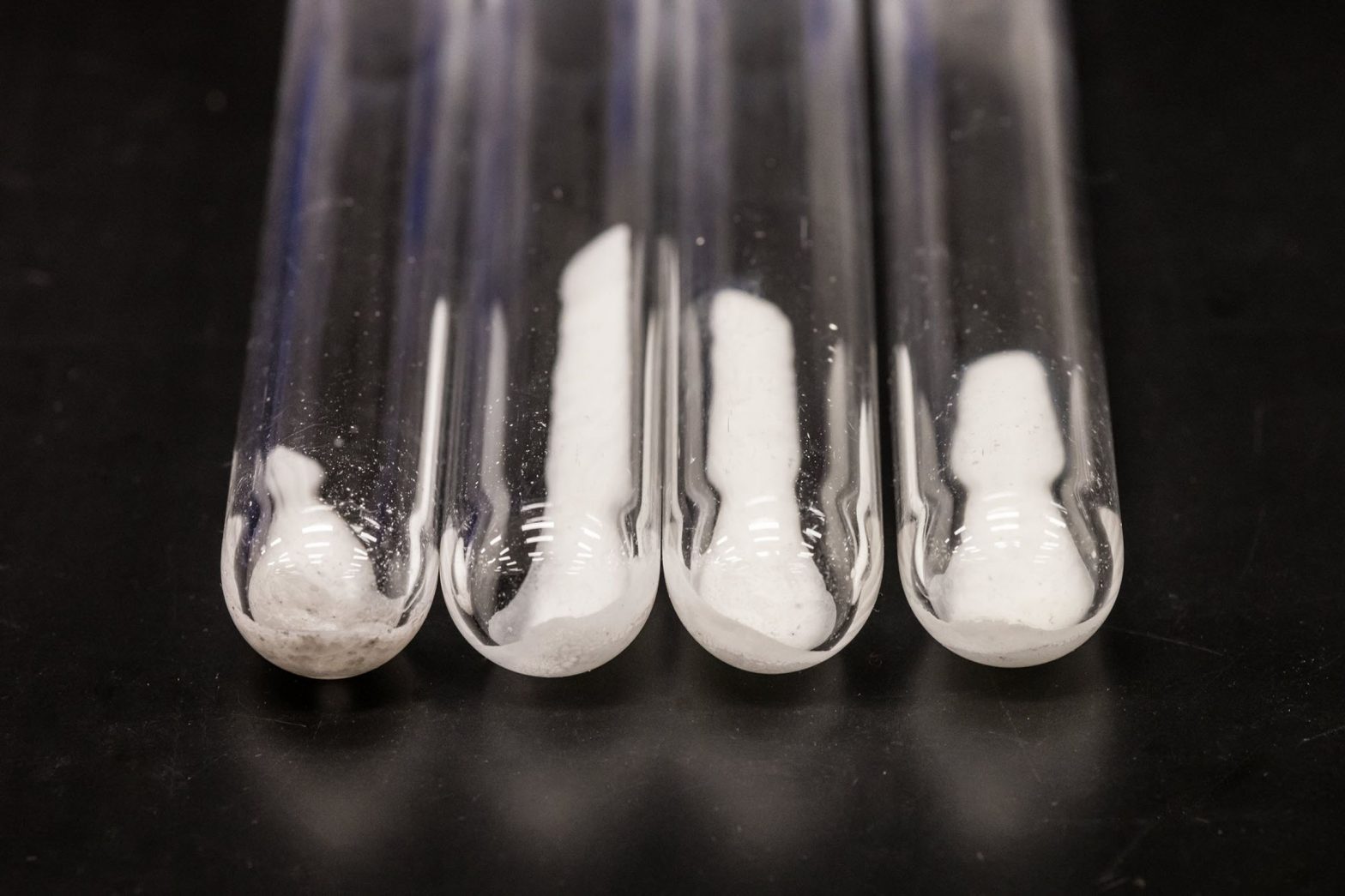/
Advances in AI and high-performance computing are changing the way scientists look for new battery materials.
Share this story
If you buy something from a Verge link, Vox Media may earn a commission. See our ethics statement.
:format(webp)/cdn.vox-cdn.com/uploads/chorus_asset/file/25213974/How_AI_and_high_performance_computing_are_speeding_up_scientific_discovery_4_.jpg)
Artificial intelligence (AI) and large-scale cloud computing is speeding up the search for new battery materials. An AI-enhanced collaboration between Microsoft and the Pacific Northwest National Laboratory (PNNL) has already produced one promising new material, which the two are sharing publicly today.
They discovered a new kind of solid-state electrolyte, the kind of material that could lead to a battery that’s less likely to burst into flames than today’s lithium-ion batteries. It also uses less lithium, which is getting harder to come by as demand soars for rechargeable EV batteries.
There’s still a long road ahead to see how viable this material is as an alternative to traditional lithium-ion batteries. What scientists are most excited about is the potential for generative AI to speed up their work. This discovery is just the first of many materials they’ll test in search of a better battery.
“The big point to make is the speed by which we got to a new idea, a new material. If we can see that kind of acceleration, my bet would be on that this is the way of the future to find these kinds of materials,” says Karl Mueller, a physical chemist and program development office director at PNNL.
Microsoft reached out to PNNL researchers last year to offer its Azure Quantum Elements (AQE), a platform that brings together high-performance computing and AI — and eventually, quantum computing, according to Microsoft. The company launched it last year as a tool tailored for discoveries in chemistry and materials science.
The researchers queried AQE for battery materials that use less lithium, and it quickly suggested 32 million different candidates. From there, the AI system had to discern which of those materials would be stable enough to use — which wound up being around 500,000. They used more filters to deduce how well each material might conduct energy, simulate how atoms and molecules move within each material, and suss out how practical each candidate would be when it comes to cost and availability.
Eventually just 23 candidates were left, of which five were already known materials. All the whittling down took just 80 hours — a feat so speedy it would have been virtually impossible without AI and AQE.
“Thirty-two million is something that we would never ever be able to do … Imagine a human sitting and going through 32 million materials and choosing one or two out of it. It’s just not going to happen,” says Vijay Murugesan, a staff scientist and materials sciences group lead at PNNL.
:format(webp)/cdn.vox-cdn.com/uploads/chorus_asset/file/25214126/How_AI_and_high_performance_computing_are_speeding_up_scientific_discovery_3.jpg)
PNNL synthesized one promising candidate from that search to test it. They were able to produce a working battery from it and use that to power a lightbulb and clock. Hundreds of prototype batteries will need to be tested and tweaked for this new material to prove itself. So don’t expect it to hit store shelves anytime soon — there’s been plenty of research on promising new materials that never make it to market.
What’s exciting about this particular candidate is that it uses a combination of lithium and sodium, an abundant element and the main component of salt. Microsoft says the new material could cut down the amount of sodium used in a battery by as much as 70 percent.
On top of that, it could be used to create a solid-state battery that’s safer than today’s lithium-ion batteries made with liquid electrolytes that are more prone to overheating. The tricky part is that solid electrolytes generally haven’t been as good at conducting energy as their liquid counterparts. That’s a challenge researchers are still trying to overcome with this new material, since it wound up showing lower conductivity in lab tests than initially predicted.
Fortunately, there are still other promising candidates for the researchers to make and test as they try to create the next generation of batteries needed to power the world with renewable energy. Keep in mind that generative AI has a growing environmental impact itself, particularly greenhouse gas emissions associated with all the energy burned with computing. That makes it important to simultaneously increase the energy efficiency of computing and to run data centers on clean energy — which requires better batteries.
“We need to really compress the next 250 years of chemistry material science into the next two decades, right? And that’s because we want to save our planet,” says Krysta Svore, who leads the Microsoft Quantum – Redmond (QuArC) group at Microsoft Research. “As you can see from these results, AI and high-performance computing together are able to deliver an acceleration in that scientific discovery.”
